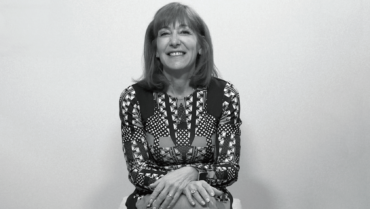Dr. Black is a well-known international speaker and author and an early participant in collaborative care alongside Jeffery J. Machat, MD, FRSCS, DABO. In this interview, Dr. Black talks about her career decision in grade 13, how she came to meet Dr. Machat as his patient, and how their collaborative partnership has developed over the years.
Interviewed by Scott KrzYwonos, CollaborativeEYE Editor-in-Chief

BMC: At what point in your life did you decide to pursue a career in eye care?
Sondra Black, OD: I have one of those stories that isn’t the traditional I’ve-wanted-to-do-this-since-I-was-a-child story. But the story is simple: When I was in grade 13 (yes, we have grade 13 in Canada), I told my closest friend that I had no idea what I wanted to do. He told me he was going to the University of Waterloo to become an optometrist. And I said, “Okay, I think I’m going to come with you.” Honest to God, that’s how it came about.
BMC: When did you begin to realize that you had an aptitude for eye care?
Black: I had classmates who did way better than I did academically, but they couldn’t talk to patients. Our clinician-preceptors weren’t happy with their performance, and that’s where I excelled. That’s when I realized that I was in the right field.
BMC: When did you first start collaborating with surgeons?
Black: I had a private practice for 20 years, and, 18 years into it, I decided to undergo LASIK. I did a lot of research. I went to all the clinics in the city, and I sat in on a lecture at TLC Laser Eye Centers given by Jeff. After listening to him I said, “Okay, he’s going to be my surgeon.”
I began to tell my patients about this life-changing event, and, after hearing it from their primary eye care provider, they decided that they wanted LASIK for themselves. I was referring about a dozen patients per month to Jeff’s practice.
BMC: Was that a lot of patients at the time?
Black: I was among his top referrers, for sure. And I took an extra step by making sure I was present with my patients during their surgery. Jeff noticed that things flowed more smoothly when I was there. He called me one day and said, “Sondra, you’re taking too much time out of your practice to be here, but I don’t want you to step away. Let’s change things around a little bit.”
BMC: What did you work out?
Black: At first, Jeff scheduled all of my patients on the same day of the month. This way, I could make a single visit for a half day per month and still be with all of my patients. And he gave me the tools—a pachymeter, a topographer—to do complete preoperative workups in my own office.
BMC: So you were never in the same office?
Black: Not at first. But when the first custom LASIK procedures were about to be done in Canada, Jeff asked if we could start working together 2 days a week. In March 2000, I worked up 135 patients for custom procedures, and he operated on every one of them. After that, we knew we needed to work together full time.
BMC: How many other practices had a surgeon-optometrist relationship like yours?
Black: No one else was doing this in the early days except for TLC. I credit Jeff, really, as the innovator for comanagement.
BMC: Did you encounter any resistance to this model?
Black: Oh, sure. Jeff in particular encountered ophthalmologists who did not think that working with optometrists was the right way to go, that ODs and surgeons were in competition. In reality, we really are specializing in different parts of eye care. And we do much better when we work together. I was lucky because Jeff was the cofounder of TLC, which embraced the comanagement model from the start.
BMC: What advice would you give to your 25-year-old self?
Black: I would tell myself that it is extremely important that optometry adopt a medical model. Optometrists who think that they can do right by their patients by not giving them surgical refractive options and only performing annual eye exams are doing a disservice to their patients.
I would also tell myself that patients must understand all of the options that are available to them, whether for refractive or intraocular surgery. Optometry should ensure that the ocular surface is healthy before making a surgical referral, and all relevant information about the patient should be passed along to the surgeon. And I would tell myself to work with a surgeon who thinks like I do.
BMC: If you had to nominate one creative mind in ophthalmology, whom would it be and why?
Black: I’ve said his name plenty of times already: Jeff Machat, the surgeon who hired me. He really did start the whole concept of comanagement. He changed the face of ophthalmology and optometry.




